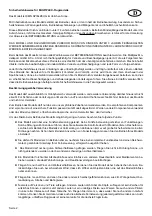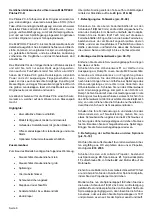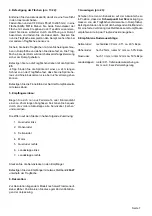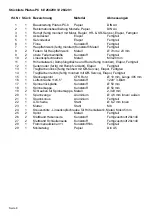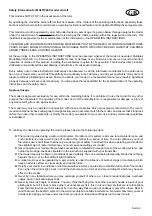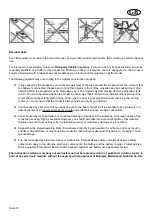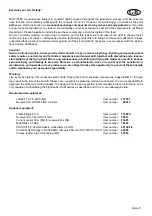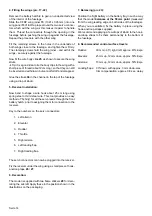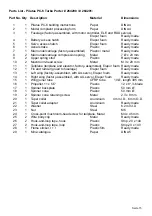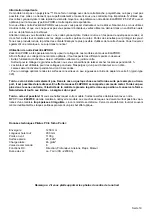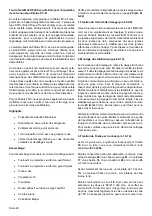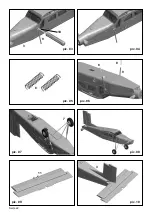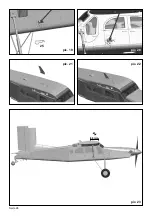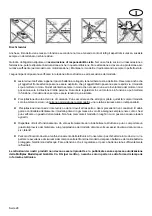
Seite 14
4. Fitting the wings (pic. 17-22):
Remove the battery hatch
4
to gain an unobstructed view
of the interior of the fuselage.
Slide the CFRP wing joiner
15
(10 Ø x 395 mm) into one
wing panel
13 / 14
. Wrap tape around the two servo connec-
tors which exit the wing, as this makes it easier to handle
them. Thread the connectors through the opening in the
fuselage before pushing the wing up against the fuselage.
Repeat the procedure with the other wing.
Fit the retaining screws in the holes in the underside of
both wings close to the fuselage, and tighten them fi rmly.
The clamping screws hold the wing joiner - and with it the
wings - securely against the fuselage.
Now fi t the wire body clips
25
as shown to secure the wing
struts.
à
Tip: it is a good idea to tie the body clips to the wing with a
short piece of thread (about 2 cm long), so that they can still
be inserted and withdrawn, but cannot fall off and disappear.
Glue the strake
06
in the channel in the top of the fuselage
using a drop of Zacki.
5. Receiver installation:
Now bend to shape a wire hook about 25 cm long using
spring steel or mild steel wire. This tool provides an easy
method of
“fi shing” for all the servo leads through the front
battery hatch, prior to assigning them for connection to the
receiver.
Key to the numbers on the servo connectors:
1. Left aileron
2. Elevator
3. Rudder
4. Throttle
5. Right aileron
6. Left landing fl ap
7. Right landing fl ap
The servo connectors can now be plugged into the receiver.
Fix the receiver under the wing using a small piece of hook-
and-loop tape
26
/
27
.
6. Decoration:
The model is supplied with two fl ame stickers
28
for deco-
rating the aircraft. Apply these in the position sho wn in the
illustrations on the packaging.
7. Balancing (pic. 23):
Position the fl ight battery on the battery tray in such a way
that the model
balances at the 58 mm point
(measured
from the wing leading edge on both sides of the fuselage).
When you are satisfi ed, fi x the battery in place using the
hook-and-loop straps supplied.
We recommend applying a few drops of Zacki to the hook-
and-loop straps to
fi x them permanently to the bottom of
the fuselage.
8. Recommended control surface travels:
Rudder:
30 mm (~35°) right / left, approx. 40% Expo
Elevator:
25 mm up, 12 mm down, approx. 50% Expo
Ailerons:
13 mm up, 12 mm down, approx. 50% Expo
Landing fl aps: 90° down, with approx. 3mm down-elev.
trim compensation, approx. 0.8 sec. delay


